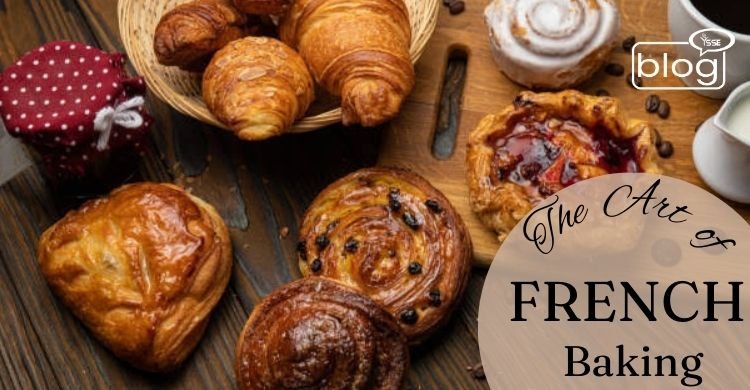French-baked products have achieved universal fame across all corners of the world. French pastries are popular through their rich flavors and fragile textures, which characterize crossoints and macarons. What elements produce the unique nature of French baking methods? Besides ingredients, technique remains essential, with additional requirements for patience and passion. The wonderful world of French baking offers both bakers and treat lovers the opportunity to examine its exquisite methods.
Why is French Baking Special?
French baking is unique because it follows precise methods and uses high-quality ingredients. French bakers take their time to create perfect textures and flavors. Whether it’s a simple baguette or a fancy cake, every baked good is made with great care.
Key Ingredients in French Baking
French bakers use simple but high-quality ingredients. Some of the most common ones include:
Butter: French butter is rich and creamy, making pastries soft and flavorful.
Flour: Different types of flour give each pastry a special texture.
Eggs: Eggs add richness and help the dough rise.
In sweet treats like tarts, cakes, and éclairs.
Yeast helps make bread light and airy.
Chocolate & almonds are often used in classic French desserts.
Famous French Baked Goods
- Croissant
The croissant is one of the most popular French pastries. Made with layers of buttery dough, it is light, flaky, and perfect with a cup of coffee. Making croissants takes time, as the dough needs to be folded and chilled several times to create its famous layers.
- Baguette
The baguette exists as a slender bread that presents a texture between crispiness on its exterior layer and softness inside. The traditional French bread forms an essential part of French culture because it accompanies various condiments, including different dairy products and spreads. To cook traditional French baguettes according to the precise regulations, French bakers must use only flour, water, salt, and yeast.
- Macaron
Macarons represent baked confections between two shells that cover a light filling and present various colored appearances. The assortment of flavors includes traditional options along with classic choices of vanilla and chocolate and rare combinations of raspberry. Skillful handling combined with patience stands as essential for preparing perfect macarons despite their basic appearance.
- Éclair
The long pastry shape of an éclair contains cream filling, which receives chocolate decoration on top. The soft and airy consistency of the dough produces an elegant dessert that brings a wonderful taste.
5. Tarte Tatin
This is an upside-down apple tart that is caramelized to perfection. It has a sweet, buttery flavor and is often served with whipped cream or ice cream.
French Baking Techniques
French baking is all about precision. Here are some important techniques used by French bakers:
Laminating: folding butter into dough to create flaky layers, as seen in croissants.
Proofing: Let the dough rise slowly for better flavor and texture.
Tempering Chocolate: Heating and cooling chocolate carefully to make it shiny and smooth.
Whipping Egg Whites: Creating a light and airy texture in desserts like macarons.
How to Start French Baking at Home
You don’t need to be a professional to try French baking! Start with simple recipes like:
A classic butter madeleine (small, shell-shaped cake).
A brioche (a soft, buttery bread).
A basic tart with fresh fruits.
Good-quality materials combined with proper step execution will result in successful baking. Mastering baked goods requires time, yet diligent practice will eventually lead to successful results.
Traditional baking signifies the harmonious union of artistic talent with an emotional dedication to traditional methods. The magic in each crumb of croissant, alongside the perfection of macaron desserts, represents devoted culinary work.
If you love baking, why not try making a French pastry at home? It’s a fun and rewarding experience—and you get to enjoy delicious results!
To read more blogs, click here.
Writer,
Ferdous Ara Rimi
Intern
Content Writing Department
YSSE.

